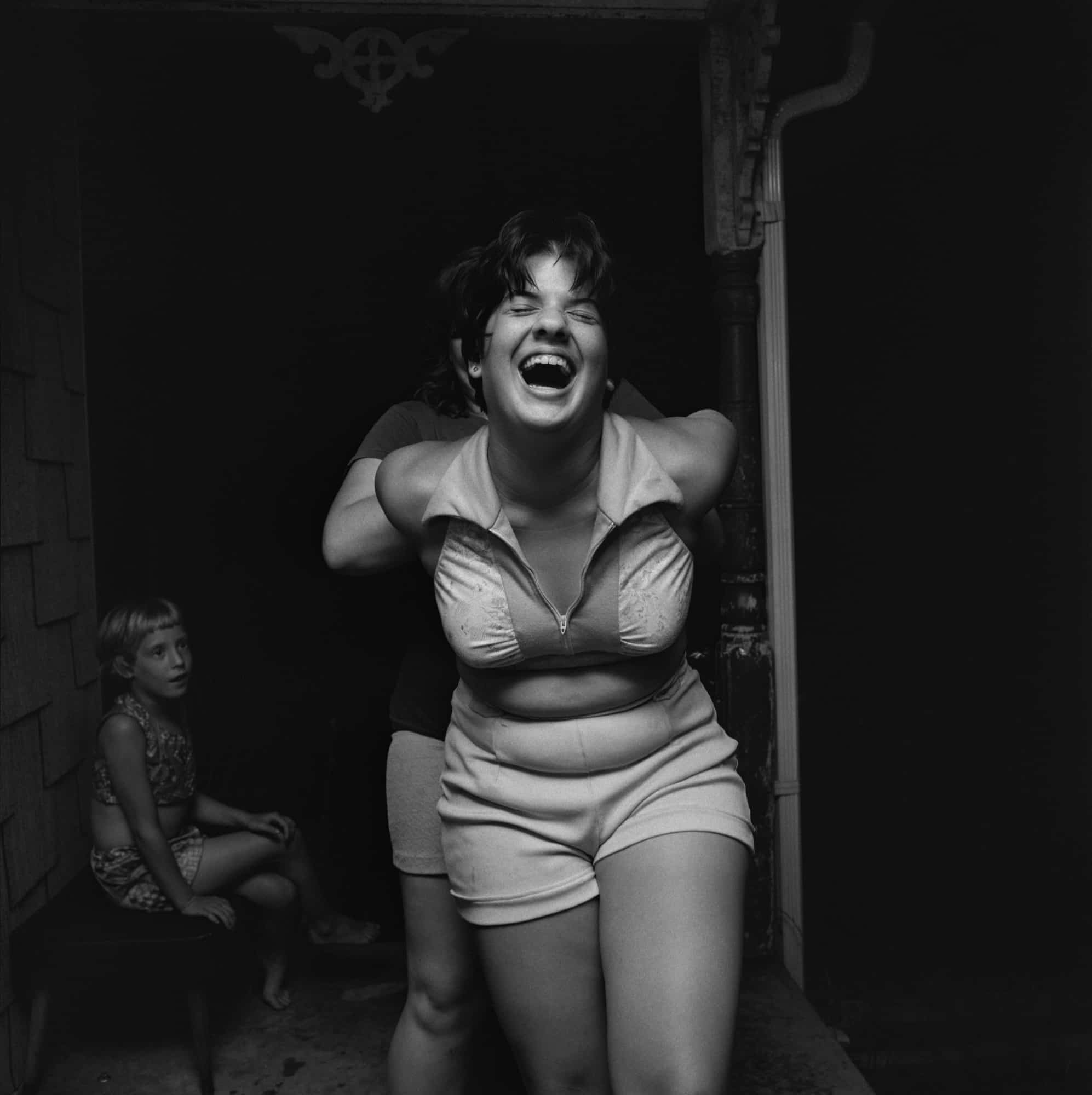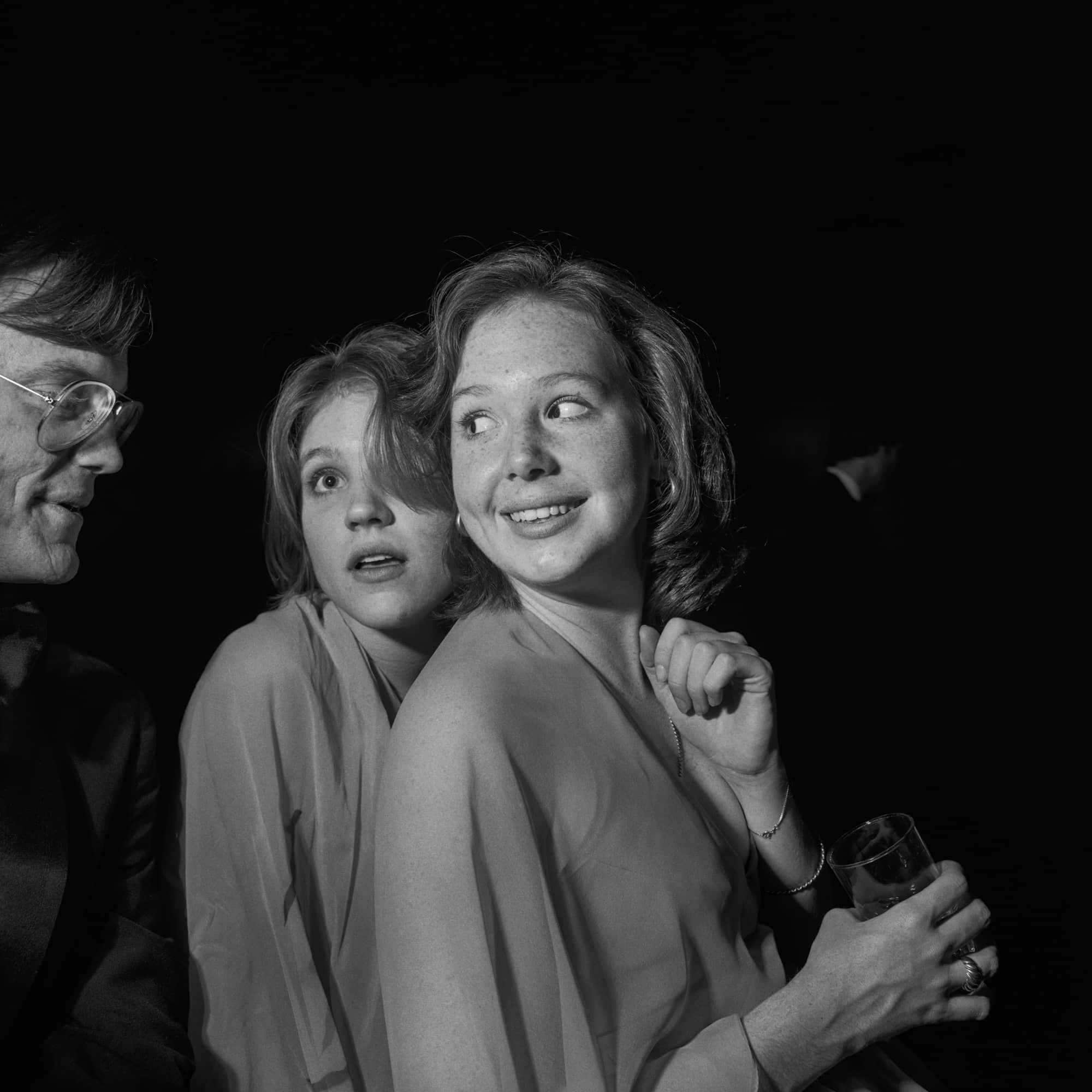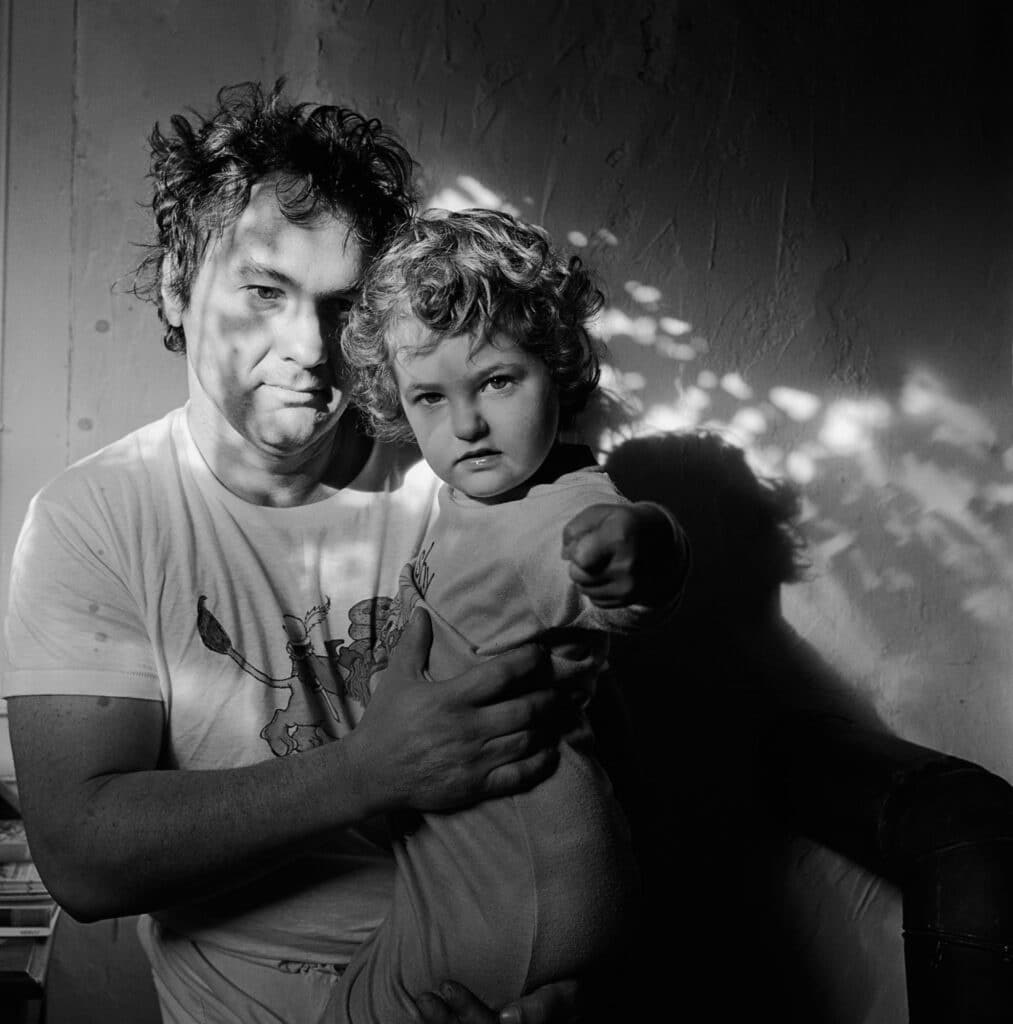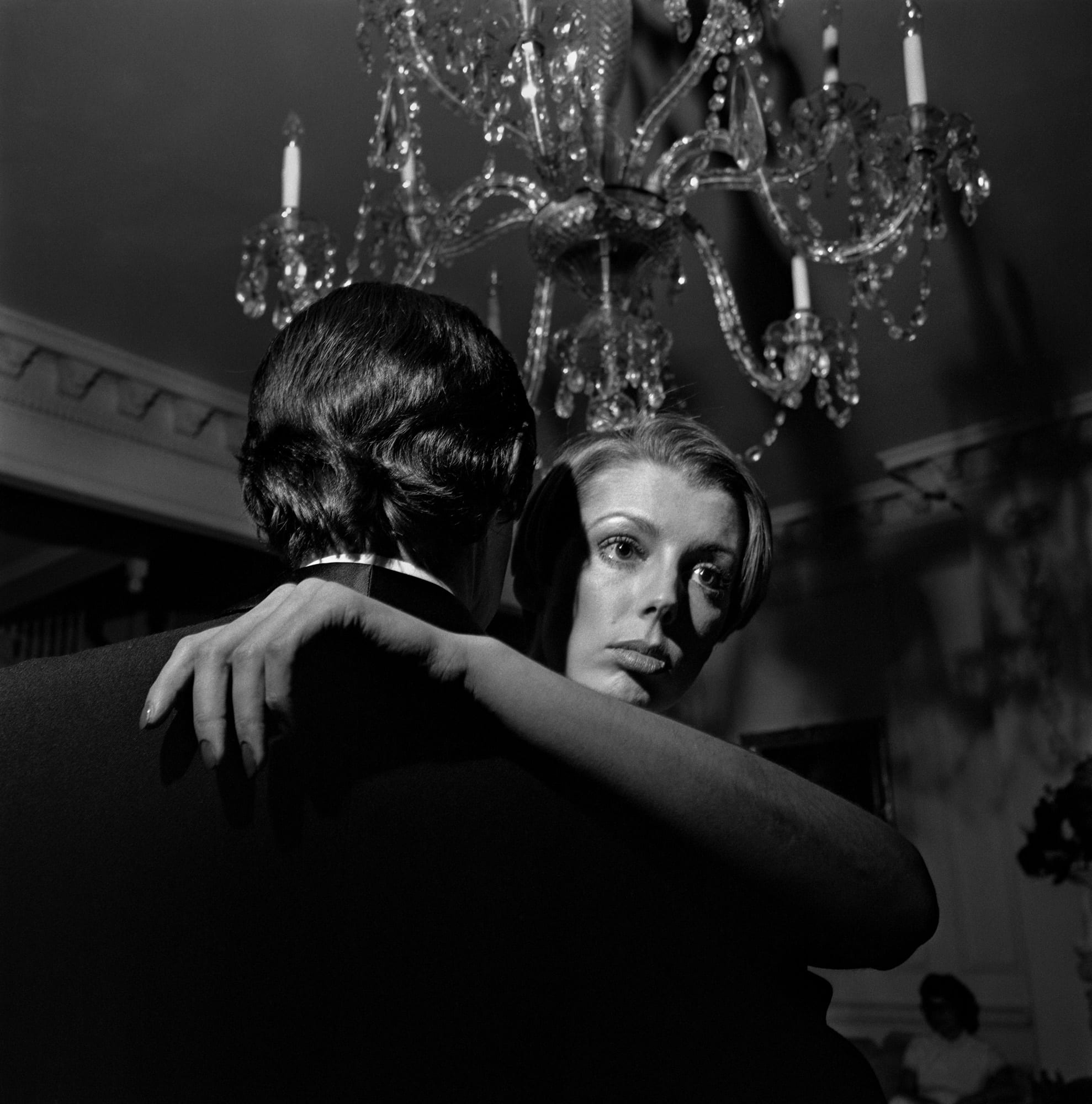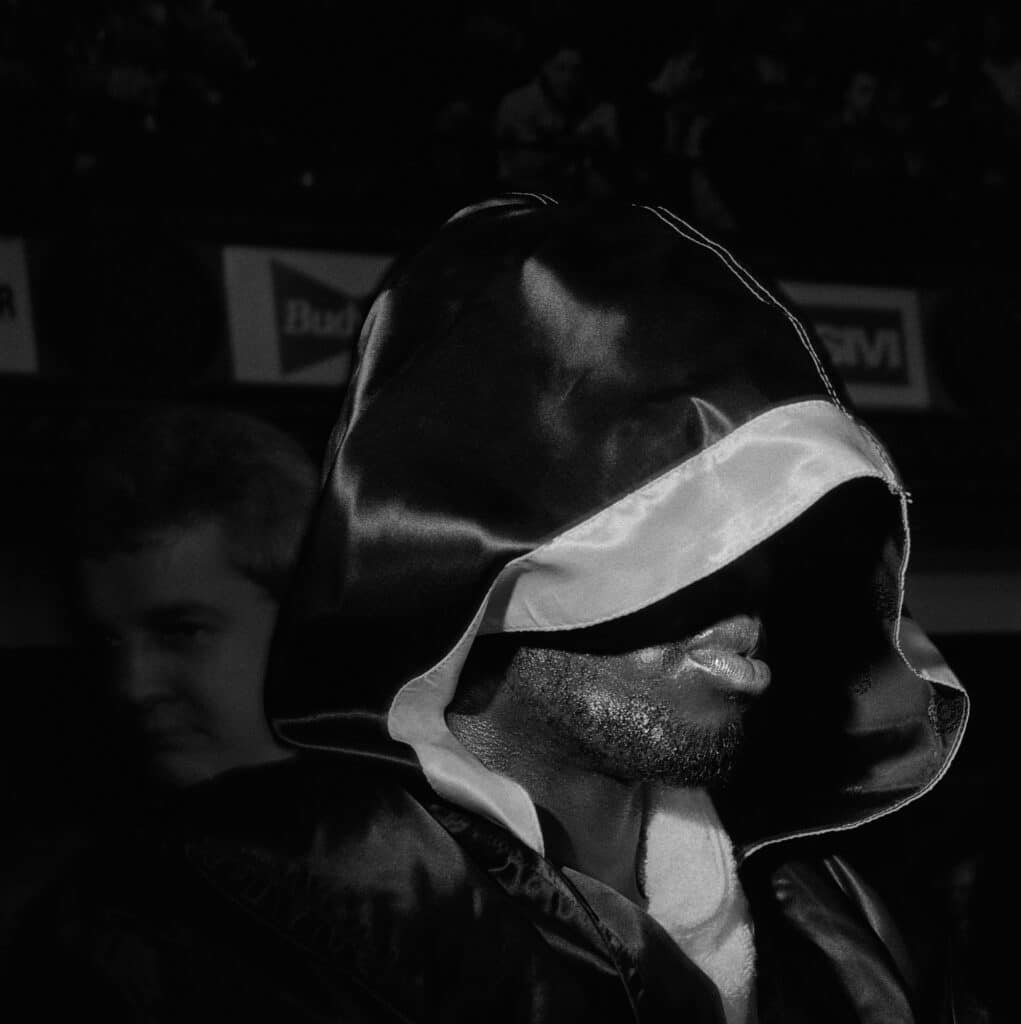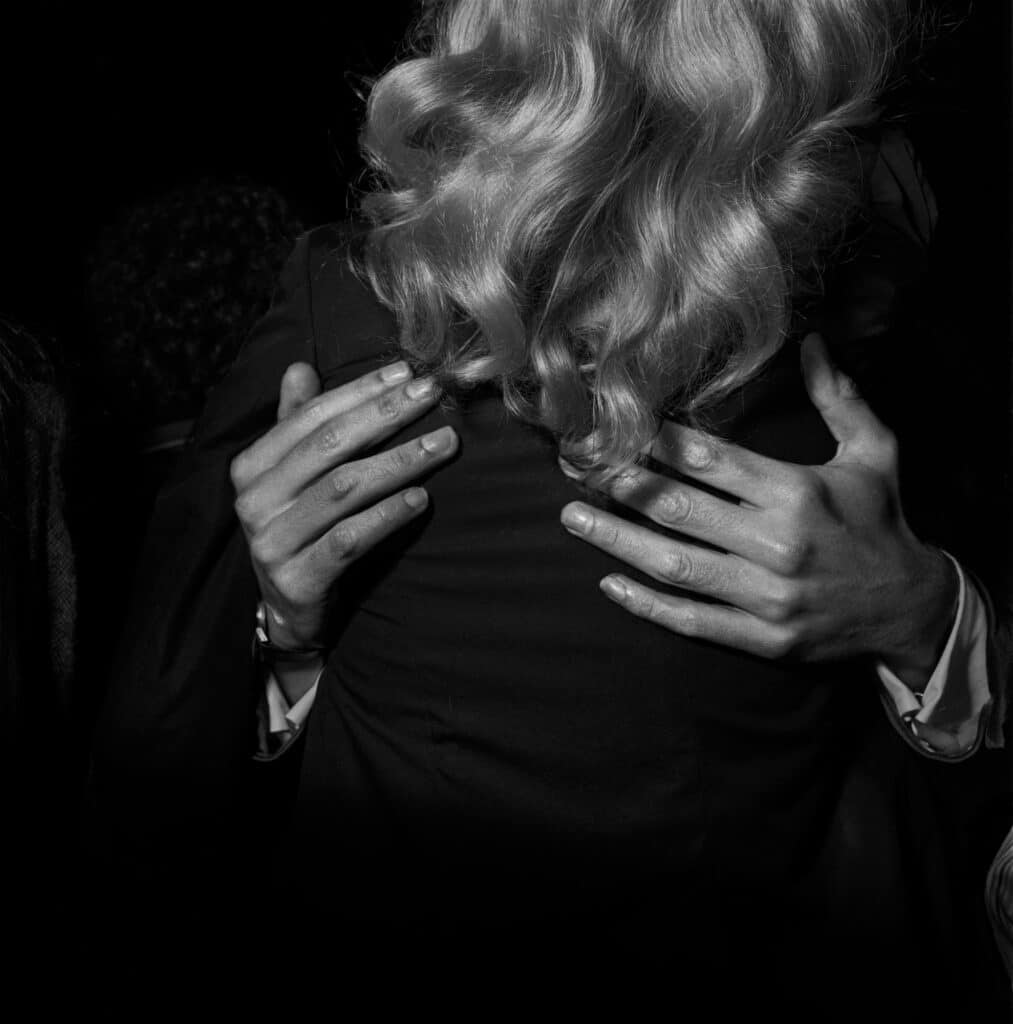What was the thinking behind the selection that puts together some of your best-known series, from “Social Graces” to “Boxing” to “Loggers”?
I have to give it all to Robert Mann. I’ve known him for 40 years, but I had never really worked with him before and I had been without a gallery for maybe 10-12 years, on purpose. Now I thought it’s about time and Robert said “okay, good”. And I must say, it looks pretty damn good. Each moment was my choice, obviously. But as far as the constellation that was assembled for the walls, it was Robert’s choice.
Why did you decide to be without a gallery for a few years?
A lot of people go off to make a series of pictures about one thing or another, and then they make a show or a small book or whatever it is, right away. I’ve never been that way. Even back in the days when Danny Lyon and other folks were publishing their own books, I wasn’t. I was just doing the work and putting it in a box. And only much later in my life did I decide to open the box.
You’ve been photographing for decades, and society has changed a lot in this time frame. How did the experience of being among other people, with a camera in your hand, change overtime?
Well, when I was a young person I came from a very left wing family with a tremendous amount of hope about human nature being basically positive. And even though there would be contradictions to that, I was convinced that through socialism, communism, whatever “ism”, human beings would be able to solve their problems and live together with some degree of fairness. As life has gone on and things have changed, I see that any notion that we had for “revolution” has been, reasonably speaking, nullified by the factors of human greed, human stupidity and American dominance over the world in ways which are incalculably cruel, unbelievably self selective. In America you can say anything you want, but as long as it’s not effective. As soon as it becomes effective, they’ll swash you.
So, did your work ever get you in trouble?
There was a time I did get in trouble. It was a group of pictures called the “Forbidden Pictures”, a fashion shoot in color for the New York Times Magazine. Inspired by Magical Realism, I photographed the fashion and decadence of the Weimar Republic, but it was actually political satire aimed at the current American leaders. I decided to include a George W. Bush look alike among the models. He had just been elected and 9/11 had happened. I put him in this group of forbidden pictures doing all kinds of things which would be essentially blasphemous for a leader to do, and the work became overtly provocative. I was creating the political mischief that I wanted. I really loved not necessarily being in the center of the limelight, but stimulating the center to become more round, full and controversial.
Many of your best-known photographs are characterized by a strong physicality and an exchange of energy with people around you, but you said that in recent years you preferred to keep to yourself. Are you currently photographing?
I am now 81 years old and I want to be alone more and more often. My wife and I now live on a farm which is one mile off the road, and we have no neighbors whatsoever. That certainly changes your eye. Over the years I have taken a lot of landscape pictures, and they’re not about landscape, they’re about what it means to stand there in front of all of that beauty or all of that ugliness, whatever it may be. And how do you make a picture which can interpret your feelings about being either assaulted or cuddled, or soothed, by what you see in front of you.
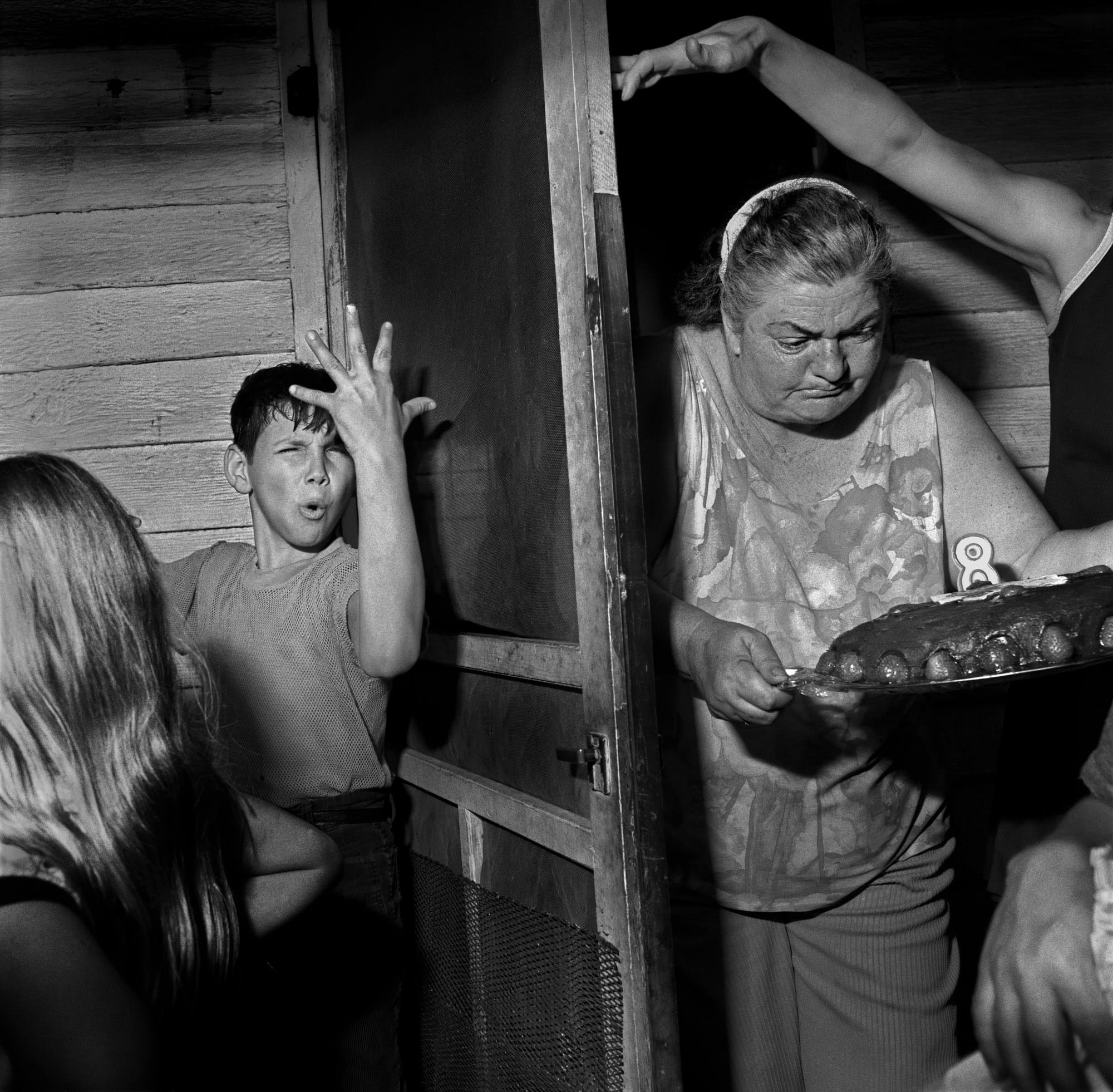
Teaching has been an important part of your life. What do you tell the students to help them overcome the fear that might keep them from unleashing their creativity and initiative when they photograph people?
Well, everybody has to do things in their own way, but the most effective thing in terms of neutralizing whatever trepidation or hesitancy on the part of the subject is to not go photographing so that you just take a photograph, but so that you can feel the humanity of the person that’s in front of you. If you want to reach out, to create a picture that could perhaps enable the whole world to feel what you felt and what people felt about themselves, generally speaking the person you have in front of you will not react in a hostile way.
Photos that have been widely published likely lose their emotional impact for us photographers, we’ve seen them too often, and it’s sometimes the outtakes that retain the power to bring us back to specific moments in memory. What is your relationship with your archive?
The lower part of the barn, where the cows used to live, is filled up with photographs. There are often people coming around who are looking to purchase parts of the archive for their institutions. I’m now working on two or three books, all at the same time. And here’s the interesting thing about going back into the archive because indeed, as you suggest, the oldies but goodies that we know so well, and have been applauded by many, are slightly dead to me because they’ve been objectified. When I was photographing they were deeply part of my own selfhood, my personality, my reason, my politics, everything. Today they’re just pictures, good pictures.
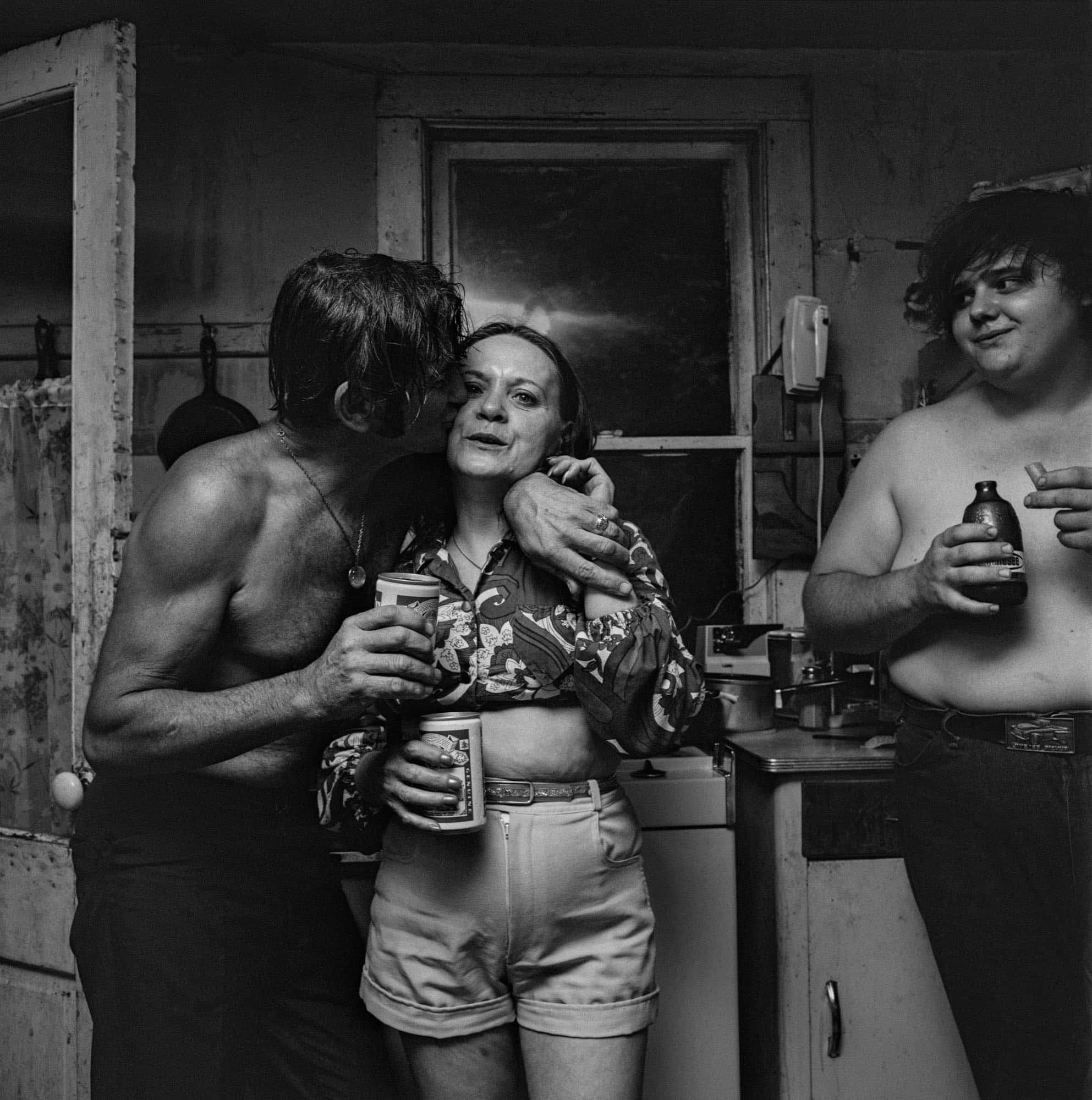
What is your process when you’re editing the
new books?
Putting the book together is kind of wild because I have made little tiny 4×4 prints so I could lay them out, and we printed about 1500 images. I saw some of these pictures a long time ago and didn’t think about them again, but a year ago I went through all of the contact sheets, and I have to tell you that I’m a really good photographer. How do you edit a book where 1000 pictures are really excellent? Do you want the oldies but goodies that have been in the books already? Some of them will be in, they’re important, but I want to create a roadway, not just a white line.
It sounds like “time” could be a big thread, considering the length of your production and the historical importance the work has acquired. Do you already have a title in mind for a new book?
I haven’t figured out a name yet, no, I guess it could be called “The Time it Takes to Get to Forever”.
The exhibition “Larry Fink” is on view at Robert Mann Gallery until March 4.
